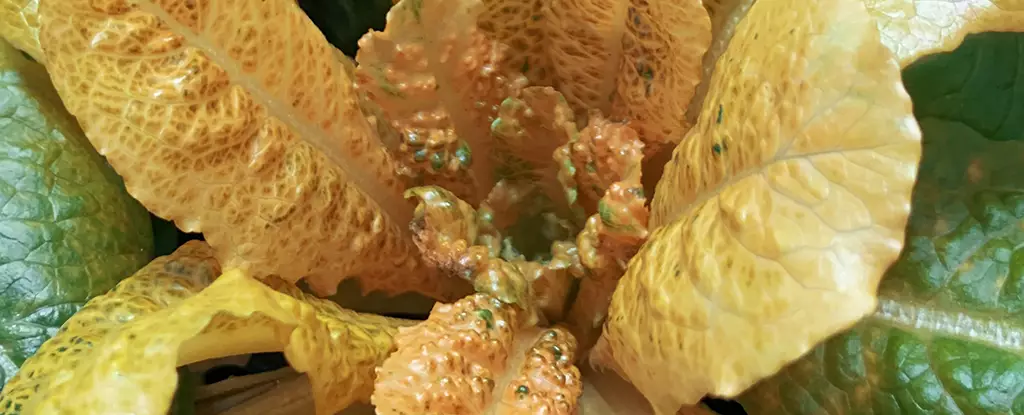In a groundbreaking development from the realm of agricultural biotechnology, researchers at Valencia Polytechnic University (UPV) have successfully engineered a unique variety of lettuce, termed ‘golden lettuce,’ which boasts remarkably elevated levels of vitamin A. This nutrient is vital for numerous bodily functions, including immune responsiveness, vision enhancement, and overall growth and development. What sets this endeavor apart is not only the nutritional enhancement of this particular vegetable but the potential implications for a wide range of crops. This initiative could pave the way for a new generation of genetically modified vegetables that enhance dietary health.
Vitamin A deficiency continues to be a pressing global health issue, impacting hundreds of millions of individuals, particularly in developing regions. Traditional dietary sources of this crucial nutrient, such as carrots and pumpkins, may not be accessible to everyone. The introduction of golden lettuce offers a promising agricultural solution. By genetically altering a standard lettuce variety (Lactuca sativa), the researchers significantly boosted its beta-carotene content—a precursor to vitamin A—thereby rendering it a potential dietary staple for improved nutrition.
To achieve this nutritional feat, the scientists first markedly increased beta-carotene levels five-fold in a related species, Nicotiana benthamiana, before applying their findings to lettuce. The challenge lay in the delicate balance of maintaining the plant’s natural physiological processes while simultaneously enriching its nutrient profile.
Beta-carotene is typically sequestered in chloroplasts, the green structures responsible for photosynthesis. However, excessive or deficient levels of this compound can disrupt the plant’s ability to photosynthesize effectively, ultimately jeopardizing its survival. Thus, the researchers needed to adapt their approach, avoiding interference with the chloroplasts while also enabling increased beta-carotene accumulation.
Utilizing biotechnological techniques, the UPV team successfully redirected the storage of beta-carotene into the cytosol—the fluid medium of the cells—and converted certain chloroplasts into chromoplasts, specialized organelles adept at storing pigments. This transformation was achieved through the introduction of a bacterial enzyme gene (crtB), facilitating the production of even greater levels of beta-carotene.
In addition to genetic modifications, the scientists employed high-intensity light treatments to stimulate the formation of plastoglobules within the leaf tissues. These fatty storage units are critical for enhancing both beta-carotene accumulation and its bioavailability, which refers to the body’s ability to absorb this essential nutrient during digestion.
Molecular biologist Luca Morelli emphasized the dual benefits of this method: “Stimulating the formation and development of plastoglobules with molecular techniques and intense light treatments not only increases the accumulation of beta-carotene but also its bioaccessibility.” This scientific innovation directly addresses nutritional challenges by ensuring that the richly fortified lettuce can effectively deliver vitamin A to consumers’ systems, particularly in areas where dietary deficiencies remain rampant.
While the golden lettuce stands as a remarkable achievement in nutritional biotechnological engineering, its implications extend well beyond its own genetic modifications. The methodology and knowledge gained from this project lay a foundation for future endeavors aimed at enhancing the nutritional profile of various crops.
As the global population grows and the demand for more nutritionally rich food sources escalates, the potential to bioengineer plants to provide essential nutrients is an avenue worth exploring. Overall, this research symbolizes a significant stride towards addressing nutritional deficiencies across the globe, which could ultimately lead to healthier populations and reduced health disparities.
Golden lettuce serves as a beacon of hope in modern agronomy and nutrition, prompting a transformative approach to how we cultivate and consume our food. It emphasizes the critical intersection of technology and nutrition in tackling complex global challenges—an essential move towards a brighter, healthier future.


Leave a Reply